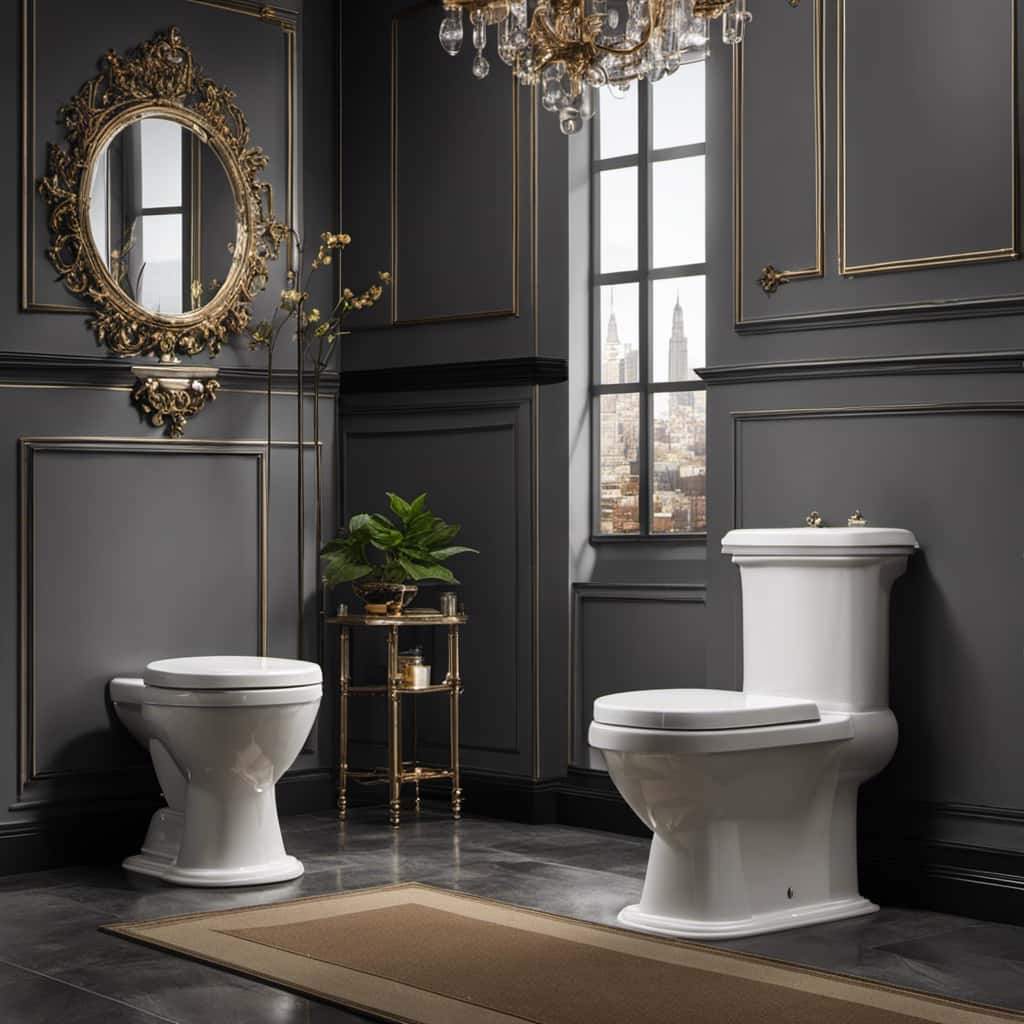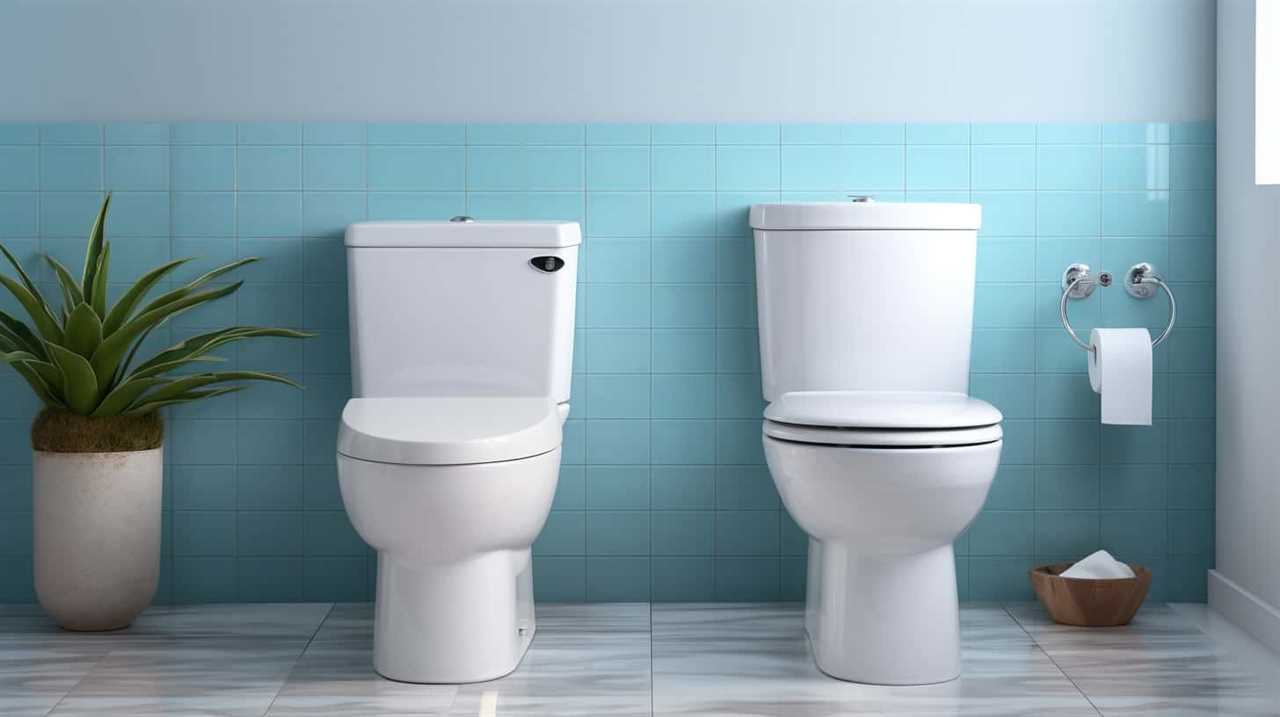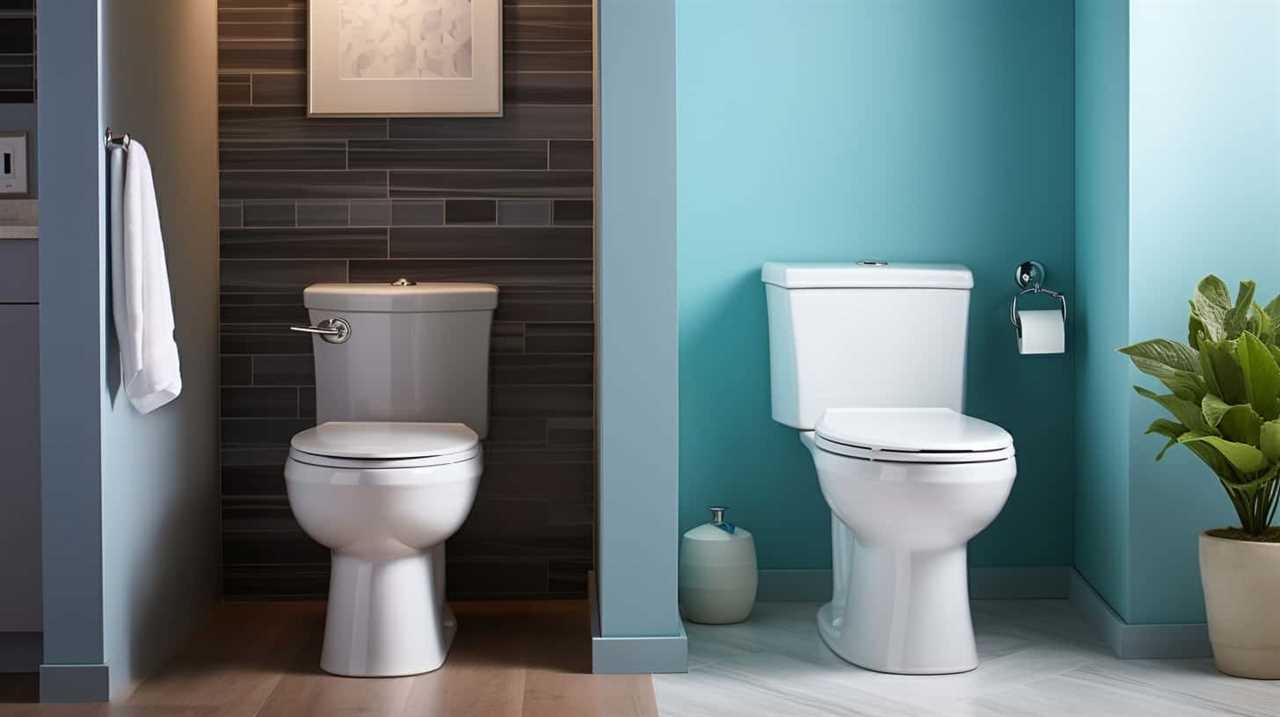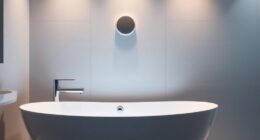When it comes to the functioning of our toilets, have you ever wondered if electricity plays a role? In this article, we delve into the inner workings of toilets to uncover the truth.
We explore the intricacies of the flushing mechanism and investigate the existence of electrically powered toilet features. By debunking common myths and looking towards the future, we aim to provide you with a comprehensive understanding of whether or not electricity is essential for the operation of a toilet.
Key Takeaways
- Toilets can function without electricity through the plumbing system and their design.
- The flush valve controls the release of water into the toilet bowl, and the flush lever activates the flushing process.
- Electrically powered toilet features, such as motion sensors and bidets, offer energy-saving and convenience benefits.
- Electric toilets are designed to be energy-efficient, and myths about their high power consumption or cost of operation are debunked.
The Basics of Toilet Functionality
How exactly do toilets work without the need for electricity? The answer lies in the plumbing system and the design of the toilet itself. Toilet plumbing is responsible for the flow of water into and out of the toilet bowl. When you flush a toilet, a mechanism called the flush valve opens, allowing water stored in the tank to rush into the bowl.
This sudden influx of water creates a siphon effect, which pulls waste and water out of the bowl and into the sewer system. The toilet is designed with a trap, which prevents foul odors from escaping into the bathroom.

Water conservation is also a key aspect of toilet functionality. Modern toilets are designed to use less water per flush, helping to conserve this valuable resource. By understanding the basics of toilet plumbing and the importance of water conservation, we can make informed choices about the toilets we use and contribute to a more sustainable future.
Understanding the Flushing Mechanism
To understand the flushing mechanism of a toilet, we rely on the functionality of the flush valve and the design of the plumbing system.
The flush valve is located at the bottom of the toilet tank and is responsible for releasing water into the bowl. When the flush lever is activated, it lifts the flush valve, allowing water to flow into the bowl.
The design of the plumbing system is crucial for the flushing mechanism to work efficiently. Properly sized pipes and adequate water pressure ensure that the water is delivered with enough force to effectively clear the bowl. Key factors in the plumbing system that influence the flushing mechanism include the diameter of the pipes, the water supply pressure, and the overall layout of the system.

- Flush valve: Controls the release of water into the toilet bowl.
- Flush lever: Activates the flush valve, initiating the flushing process.
- Plumbing system: Includes pipes, water supply pressure, and layout. Proper design is essential for efficient flushing.
Exploring Electrically Powered Toilet Features
Now let’s delve into the world of electrically powered toilet features and explore their capabilities.
Electricity saving toilet designs are becoming increasingly popular as people look for ways to reduce their energy consumption and environmental impact. These toilets are equipped with sensors and smart technology that optimize water usage and minimize electricity consumption.
For example, some models have motion sensors that detect when someone is approaching the toilet, activating the flushing mechanism only when necessary.
Additionally, electric bidets offer a range of benefits. They provide a more hygienic and comfortable experience compared to traditional toilet paper, and they can be adjusted to suit individual preferences for water temperature, pressure, and cleaning modes.

Electric bidets also help reduce toilet paper waste, making them a more sustainable choice.
Debunking Common Myths About Toilet Electricity
While it’s true that electrically powered toilet features can enhance bathroom technology and offer energy-saving benefits, there are common myths about the amount of electricity required to run a toilet. Let’s debunk these misconceptions and shed light on the truth:
- Myth 1: Toilets consume a significant amount of electricity. In reality, toilets have a low power consumption, usually ranging from 1 to 2 kilowatts per day.
- Myth 2: Flushing uses a lot of electricity. The truth is, the energy required for a standard flush is minimal, as most toilets rely on gravity and water pressure.
- Myth 3: Electric toilets are expensive to operate. Contrary to popular belief, electric toilets are designed to be energy-efficient, with features like dual flush options and automatic sensors.
By debunking these toilet power usage myths, we can understand that toilets have minimal electricity consumption.
Now, let’s explore the future of electric toilets and how they can further enhance our bathroom experience.

The Future of Electric Toilets
As we look ahead, it’s important to consider the advancements and potential of electric toilets.
The future of electric toilets lies in the integration of smart toilet technology and energy efficiency improvements.
Smart toilet technology allows for the monitoring and analysis of various aspects of toilet usage, such as water consumption, waste management, and user health.
This data can then be used to optimize toilet performance, minimize water usage, and improve overall efficiency.

Additionally, energy efficiency improvements focus on reducing the amount of electricity required to power electric toilets, such as utilizing low-power sensors and efficient flushing mechanisms.
These advancements not only contribute to environmental sustainability but also enhance the user experience by providing personalized settings and real-time feedback.
The future of electric toilets is bright, promising a more intelligent and eco-friendly approach to sanitation.
Frequently Asked Questions
How Much Electricity Does a Toilet Use on Average?
On average, a toilet uses a minimal amount of electricity for functions like flushing and maintaining water pressure. However, it is important to consider the cumulative impact of toilet electricity consumption on the environment.

Can an Electric Toilet Still Function During a Power Outage?
Electric toilet functionality during power outages depends on alternative power sources. Backup batteries or generators can be used to power electric toilets, ensuring their continued operation even when there is no electricity.
Are Electric Toilets More Expensive to Purchase and Install Compared to Traditional Toilets?
Electric toilets, while more expensive to purchase and install compared to traditional toilets, offer several benefits including advanced features and improved hygiene. The cost of electricity required to run them depends on usage.
Are There Any Safety Concerns Associated With Electric Toilets?
Safety concerns related to electric toilets can arise due to the use of electricity, such as risk of electric shock. Additionally, maintenance requirements may be more complex and specialized compared to traditional toilets.
Can an Electric Toilet Be Easily Converted Into a Non-Electric Toilet?
Converting an electric toilet into a non-electric one can be challenging. However, the benefits of non-electric toilets, such as lower energy consumption and reduced maintenance, make it worth considering.

Conclusion
In conclusion, electric toilets have become increasingly popular due to their advanced features and convenience.
Despite common misconceptions, electric toilets don’t require electricity to flush as they utilize a gravity-based flushing mechanism.
However, they may require electricity for additional features such as heated seats, bidet functions, and automatic flushing.
As technology continues to evolve, it’s intriguing to ponder the possibilities for future electric toilets. Will we soon have toilets that can analyze our health or even generate electricity?











